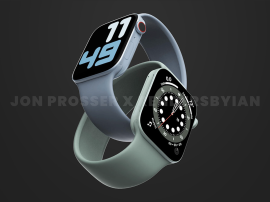Wearables need to get under the skin to succeed
For wearable tech to take hold, it needs to go that little bit deeper, says Verity Burns

Five years ago, 3D TVs were the technology industry’s “next big thing”, with every big manufacturer jumping on the bandwagon to bring the third dimension to our living rooms, transforming movie watching.
Except, that didn’t quite happen. After an initial rush, 3D at home went quiet. While you’ll still find it included on most TVs, it’s no longer a huge selling point, and for one big reason – the glasses turn people off.
That you have to put on clunky-looking specs for the technology to work makes this next-gen feature feel more last-gen, making it hard to enjoy the technology, preventing a fluid, fuss-free experience.
Unless a change is made soon, the flourishing wearables sector as we know it could suffer a similar fate.
READ MORE: Why, one day, we may actually all become Glassholes
Money does not mean market While manufacturers are investing right now, the flop of 3D TV shows that investment can ultimately mean nothing; to really succeed it’s going to need to become an automatic and integral part of everyday life.
We already have more devices in our lives than we know what to do with. With our tablets, smartphones, laptops and portable music players, once the gimmick of wearables wears thin, is there really space for another gadget in our plug sockets – let alone our lives?
For the concept of wearables truly to stick, I don’t want to have to remember to strap on a smartwatch or attach my fitness tracker – the technology needs to get under our skin, become second nature.
Quite literally. Project Underskin is already part way to making that happen.
Created by NewDealDesign, the designers behind health and fitness tracker FitBit, Project Underskin came from an online design challenge that asked what things might look like when technology and fashion “reach beyond the wrist”.
Their idea? A smart digital tattoo concept implanted into your hand, putting the ability do things like unlock your door, share data with friends or keep an eye on your vital statistics literally at your fingertips.

Speaking to Co.Design, the website that set the challenge, Jaeha Yoo, director of experience design at NDD said: “When we started working on it, everyone was a little squeamish about implanting something. But there’s a lot of cultural precinct.
“Obviously tattoos, piercings—people are implanting birth control. This stuff is going on now. It’s not a huge step forward to implant something like Underskin.”
Underskin runs off of your body’s electro-chemical energy, no need to charge it and it’s always ready to go.
Even better, Underskin can both recognise and contextualise movements and gestures; it tells the difference between a handshake with a colleague and holding hands with your partner.
Project Underskin health tracks too, monitoring vitality with precision and encoding results in a unique format – the tattoo can glow in certain circumstances too, perhaps when your body is at its peak.
READ MORE NEW PERSPECTIVES: promoted
Can all tech fanboys please stop fighting and hug
Future perfect
This might sound all very futuristic but NewDealDesign reckons Underskin could be built within the next five years, thanks to the level of current electronics research available.
And president of NDD Gadi Amit thinks there’ll be a lot more start-up companies offering similar concepts very soon.
“Seriously,” he said, “I could tell you, in the last year, I’ve had discussions with entrepreneurs, three to four times, about physically invasive wearables… it’s a reflection on what design will be in a decade or so.”
If wearables want to secure a better fate than that of 3D TV, these concepts can’t arrive quick enough.
Verity Burns is multi-media editor of WhatHiFi.com



